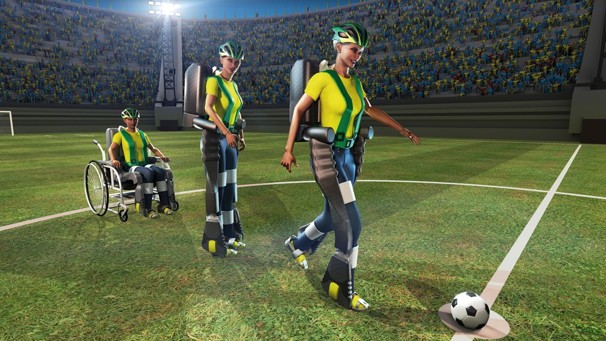Here at Magee, we have seen some incredible things in adaptive tech — but this story makes even our jaws drop. The ceremonial first kick at the 2014 World Cup will be done by a paralyzed Brazilian teen wearing (wait for it) a mind-controlled exoskeleton. REALLY. Here’s the scoop.
The exoskeleton looks very similar to other exoskeletons supporting the lower body. The main difference is how it is controlled. The teen will wear wireless electrodes on his or her head (the candidate for this honor as yet to be chosen – read more about that process) that will collect brainwaves. These brainwaves send signals to the robotic suit, and those signals are turned into movement.
So how exactly does it work? The brain is made up of billions of neurons, or nervous system cells that transmit information throughout the body. Neurons are responsible for many different tasks in the body, including movement. More neurons communicate more information, making it important for the electrodes to monitor as many neurons as possible. Before this exoskeleton, the most neurons this type of technology could monitor was 200 at a time; this system monitors 2,000. While similar mind-controlled limbs have been demonstrated before, thanks to this more sensitive technology, this will be the first demonstration using two limbs at once.
And this new exoskeleton demo is not just about movement — it’s also about feel. Sensors on the exoskeleton will relay a feeling of pressure when each foot touches the ground. The creators are also working on an artificial skin for the wearer so he or she can feel the ball when they kick it.
This new technology was developed by Dr. Miguel A.L. Nicolelis from Duke University, a neuroscientist who leads the Walk Again Project, an international collaboration that aims to use technology to overcome paralysis.
We cannot wait to see this demonstration, and more importantly, how this technology will be used to help others living with disabilities throughout the world. Check out the brief video below to learn more about this technology and the project. Then tell us what you think!








